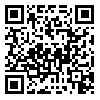Volume 8, Issue 22 (3-2022)
2022, 8(22): 115-142 |
Back to browse issues page
Download citation:
BibTeX | RIS | EndNote | Medlars | ProCite | Reference Manager | RefWorks
Send citation to:



BibTeX | RIS | EndNote | Medlars | ProCite | Reference Manager | RefWorks
Send citation to:
alihoory M. The Characterization of the Protagonist in Romance-Chivalry Poems
From the 5th century to the end of the 10th century A.H.. Journal title 2022; 8 (22) :115-142
URL: http://jls.khu.ac.ir/article-1-1990-en.html
URL: http://jls.khu.ac.ir/article-1-1990-en.html
University of Ferdowsi , m.alihoory@yahoo.com
Abstract: (3966 Views)
“Romance-Chivalry” as a literary genre, narrates in poetic terms the protagonist’s struggle to achieve the beloved. Ayyuqi’s Varqa and Golshāh, Saam Nameh, Khwaju Kermani’s Homay o Homayun, Nazl Abadi’s Masnavi-e Jamal and Jalal, and Humay Nameh and Badi al-Zaman Nameh (by an anonymous poet) are among the outstanding works in this genre from the fifth to tenth Hijri centuries. The characterization of the protagonist is among the most significant narrative characteristics of this genre. The shared characteristics between the protagonists can classified as a genre. The protagonists in this genre, who have multidimensional and mysterious personalities and are of noble and royal descendants, are portrayed as lovers, moralists, pacifists, theists, and chivalrous which render them popular among people. Also, based on context and narrative traditions, the protagonist can be characterized within an Iranian-Islamic axis where he is presented as prophet, saint, leader, and commoner. In Ayyuqi’s work, the protagonist is a leader. According to Northrop Frye, the protagonist is superior to ordinary people. The protagonist’s personality, to various degrees, follows the characterization tradition Shahname, Eskandar Nameh-e Naghalli, and Hamzeh Nameh. Gradually, The protagonist’s religiosity becomes prominent which accords with the dominant political and religious circumstances of the poet’s society, to the extent that in Badi al-Zaman Nameh we witness dogmatic protagonist.
Type of Study: Research |
Subject:
ادبیات تطبیقی
Send email to the article author
| Rights and permissions | |
 | This work is licensed under a Creative Commons Attribution-NonCommercial 4.0 International License. |







